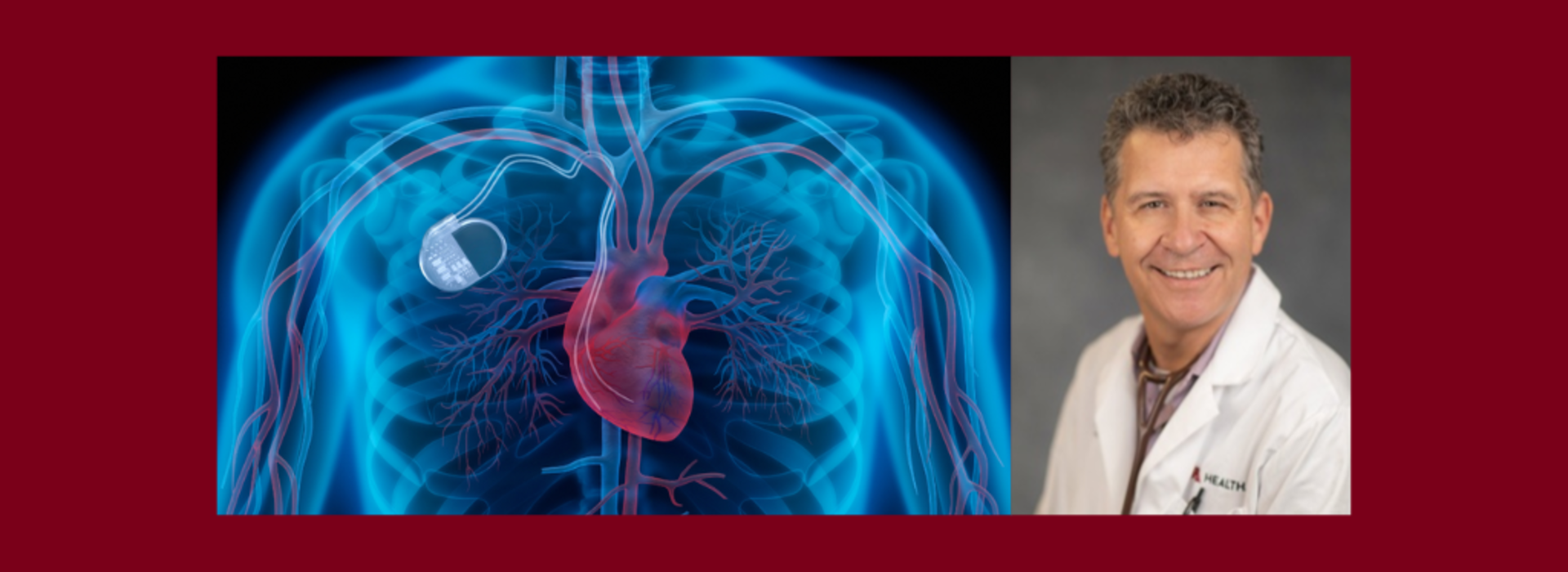
Speeding up heart rate helps heart failure patients with stiff hearts
MINNEAPOLIS/ST. PAUL (02/01/2023) — New research published in JAMA Cardiology from the University of Minnesota Medical School and University of Vermont’s Larner College of Medicine found evidence that speeding up the heart rate with pacemakers may help patients who often experience shortness of breath.
More than 75 million Americans have high blood pressure accompanied by heart muscle thickening and more than three million of these patients suffer from heart failure, a leading cause of hospital admissions and healthcare costs. In heart failure with a stiff heart muscle, the heart is less able to relax and refill with blood. By implementing a tailored acceleration of heart rates, researchers can reduce congestion and improve the circulation of blood.
“We have tried the same medications that work for weak heart failure with limited success. For example, beta-blockers save many lives in weak heart failure, but in patients with stiff hearts, they are likely harmful by slowing the heart rate and increasing the congestion of blood in the heart,” said Markus Meyer, MD, PhD, an associate professor at the U of M Medical School and the Lillehei Heart Institute. “In this study, we tested if the opposite of beta-blockers, speeding up the heart rate with pacemakers, helps these patients.”
Heart failure occurs when the heart cannot adequately meet the body’s demands. About half of heart failure patients have a stiff heart with a normal pumping function but poor heart muscle relaxation — known as heart failure with a preserved ejection fraction (HFpEF). The other half of heart failure patients have an enlarged and weak heart with a reduced pumping function, called heart failure with a reduced ejection fraction. This condition has many effective therapies.
“This study provides incremental evidence that higher heart rates — within the normal range — and not lower heart rates may be beneficial for patients with preclinical or overt HFpEF,” said Margaret Infeld, MD, MS, a cardiac electrophysiology fellow at the University of Vermont’s Larner College of Medicine and the study’s lead investigator. She added that HFpEF is a diverse multisystem disease with few available therapies.
The research team sought to explore if raising the pacemaker rate to a more normal resting rate, based on patient body size, would improve outcomes in patients with stiff hearts. The patients paced at faster heart rates reported feeling markedly better and were less congested. In addition, patients were more active and had less atrial fibrillation — a common heart rhythm disorder associated with heart failure.
“These results are provocative,” said Daniel Lustgarten, MD, PhD, a UVM professor of medicine and coauthor of the study. “It is very important to emphasize that the pacemakers in this study were implanted in a way that is very different from traditional pacemakers; traditional pacemakers would likely not show these benefits and, in fact, could even be harmful in some patients.”
The research team believes these promising findings warrant further research to confirm the safety and benefits of this new treatment approach. They plan to continue studying the optimal pacing rates and confirm their results in extensive studies that involve many medical centers.
-30-
This study was supported by The Heart Rhythm Society Research Fellowship Award, the Martin M. LeWinter Young Investigator Award, and the Early Career Research Award through the Cardiovascular Research Institute of Vermont (M. Infeld), grant R01 HL-122744, the University of Minnesota start-up funds, and the Engdahl Family Chair for Heart Failure Research (M.460 Meyer).
About the University of Minnesota Medical School
The University of Minnesota Medical School is at the forefront of learning and discovery, transforming medical care and educating the next generation of physicians. Our graduates and faculty produce high-impact biomedical research and advance the practice of medicine. We acknowledge that the U of M Medical School, both the Twin Cities campus and Duluth campus, is located on traditional, ancestral and contemporary lands of the Dakota and the Ojibwe, and scores of other Indigenous people, and we affirm our commitment to tribal communities and their sovereignty as we seek to improve and strengthen our relations with tribal nations. For more information about the U of M Medical School, please visit med.umn.edu.